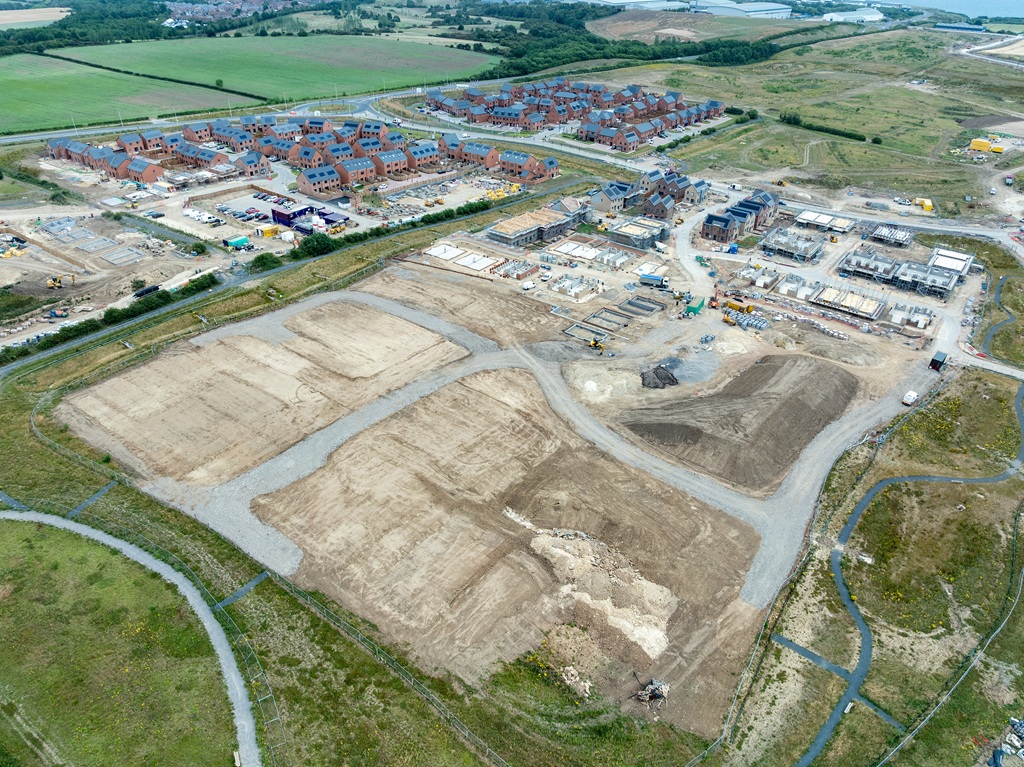The Subplot
The Subplot | Crooked House lessons, hotels, social housing
Welcome to The Subplot, your regular slice of commentary on the business and property market from across the North of England and North Wales.
THIS WEEK
- Redeveloping listed buildings: your worst nightmare, maybe?
- Elevator pitch: your weekly rundown of who and what is going up, and who is heading the other way
ALL THE CROOKED HOUSES
Listed buildings can be a nightmare to redevelop
The fire, then sudden demolition, of the Crooked House pub in South Staffordshire hit the press during a sleepy August news cycle. The case dramatises some real problems with repurposing historic buildings.
The Crooked House pub is no more. It wasn’t in a conservation area, wasn’t listed, and (although planning consultants disagree about this) the owners may not have needed consent to knock it down. But whatever emerges about the Crooked House (police say they are investigating) the episode casts light on the way planning law controls historic buildings.
Thousands of them
This matters in the North: Leeds has roughly 3,300 listed buildings; York 1,500, Liverpool 2,500; Bradford 2,400; Sheffield 1,100; Newcastle 1,000; Manchester 890 (depending on how you count them). The repurposing of Manchester’s 500,000 sq ft grade two-listed Debenhams is among the largest current projects, but there are dozens. The consensus is that the listed buildings control system is a nightmare – slow, uncertain, likely to be expensive. Any disagreement is about whether, or how, that could change for the better.
Relax
The biggest problem, according to everybody, is approaching a listed building with a rigid format, fixed ideas, and an enthusiasm for value engineering. This will lead to disaster.
“You [owners] need an open mind about your vision, be flexible with expectations, understand the building, because listed buildings will have challenges which may present in the form of less development opportunities than you imagined there would be,” says Andrew Burns, director at specialist consultancy Atelier MB in Manchester.
Understand the building and its history before doing anything is the motto, he says. “If you don’t appreciate what you’ve got, you bought the wrong building.”
Talk first
The best way to ensure success is to do your research, then talk to the heritage bodies early, and seriously. Jamie Wolstenholme is a development manager at Trilogy Real Estate, now tackling the enormous complexity of Manchester’s £213m Great Northern Goods Warehouse project. He says: “Working with listed buildings is almost always more challenging from a technical point of view. How difficult it is to then refurbish, adapt or alter that building for ongoing use really depends on the approach of the local planning authority and Historic England. Getting them on board with your development plans early and engaging in two-way conversations is key.”
Money, of course
And it all costs money, not least because the VAT regime punishes refurbishment, and retrofitting to the latest sustainability standards is potentially a massive (unaffordable) cost. When the unexpected happens – and in listed buildings, the unexpected is expected – it means headaches.
“We’re really challenged by the current VAT regime, which subsidises new-build over refurbishment and is in need of reform,” says Wolstenholme.
“Similarly, all the sustainability accreditations don’t really take into account the inherent sustainability of re-using listed buildings. It’s incredibly challenging to get the thermal and energy performance of listed buildings up to new-build standards. We could do it, but it would result in decisions that were unacceptable from a heritage perspective,” he says.
All fall down
The system feels a bit broken to many landlords and developers. They will be pleased to know that heritage bodies pretty much agree.
Catherine Croft is director of the Twentieth Century Society, the statutory consultee on modern listed buildings. She says the system is too slow, due to limited local council resources, but adds: “Too often conservation officers are junior, and that causes problems, and have no support or anyone much to talk things through with. And if you are worried about whether an application damages a building the easiest thing for a conservation officer to say is ‘No’.
“It takes more confidence or experience to negotiate a compromise,” she says. “But, increasingly, conservation officers will have to do this because improving the thermal and environmental performance of listed buildings will require more negotiation.”
You could go to prison
There’s also a major niggle about enforcement, which the Crooked House incident (fairly or unfairly) dramatised. Too often it feels like some owners play by the rules (however slow and expensive that is) and others don’t, but the lawless bunch get away with it. This saps confidence. “There should be better enforcement. There isn’t enough penalty for getting it wrong. If people think they can get away with it, they will,” says Burns.
“You need an efficient and fair deterrent, and I don’t think the enforcement system is working at all well at the moment,” says Crofts.
Others disagree: “Maybe that’s what people think but there are real risks to working unconsented on listed buildings, it’s not straightforward to get away with it – and once found out, it’s even more costly,” says Savills’ planning director Jeremy Hinds.
Happy endings
The trick, if there is one, is to love your listed building and want the best for it. But if the love isn’t there, or the listed consent process wears owners down, what happens next? Maybe look across the border to Wales for a vision of the future. Just two months ago the Historic Environment (Wales) Act 2023 received royal assent. Section 109 allows the owners of listed buildings to insist the Welsh government buys them out if listed building consent is refused, or approved with conditions, if the refusal or conditions mean the building is unusable.
Maybe not workable
This is a quid pro quo for a fairly demanding set of requirements for listed buildings, but extending this to England doesn’t appeal to Savills’ Hinds. “Interesting, but probably ineffective,” is his conclusion, thanks to notions like “viable” and “usable”. This kind of government intervention may also do unpredictable things to pricing, he suggests. Better to let the market sort it out.
 ELEVATOR PITCH
ELEVATOR PITCH
Going up, or going down? This week’s movers
Fancy financing makes its way into social housing, which could open up new developments, while hotel data suggests development will focus on London.
 Social housing is the new BTR
Social housing is the new BTR
A straw blows in on the wind from the West Country. Big-name investors have been taking a keen interest in social housing with the hope it could be the beds sector’s Next Big Thing.
Now, in a first for the social housing sector, recouponing has released £50m from an original £100m private placement with Legal & General Investment Management’s Private Credit team, agreed in 2020 with specialist developer Bromford. The fund and the developer have been working together since 2012, so remember there’s a background of trust. Even so, the move indicates that serious money is being made, and some of the fancier tools of development finance are being deployed in an effort to get around high interest rates.
The deal opens the door to another 12,000 energy-efficient affordable homes by 2031. The hope is that Bromford/LGIM’s move sets a precedent for the North’s largest social housing businesses, among them names like Manchester-based Great Places.
 Hotel sector gets complicated
Hotel sector gets complicated
Tracking the revival of the hotel sector is one of Subplot’s preoccupations (see 22 June and 29 June). It’s been a massive growth sector for the region’s property business – many big projects hinge on a hotel anchor tenant. Will it be so significant in 2024?
More data arrives suggesting regional hotels are improving faster than London hotels. Knight Frank (quoting HotStats) says London hotels achieved an occupancy rate of 82% in June 2023, a rise of 3.2 percentage points year-on-year, while hotels outside the capital recorded growth of four percentage points to almost 81% occupancy versus 2022. This still isn’t high enough, so operators are pushing up room rates, recording 8.5% and 7.6% average daily rate growth respectively in June. This is helping push up inflation.
That said, London hotels still make more money. In London, gross operating profit per available room rose 42% in the first of 2023 compared to the same period last year. In the regions, the rise was just 16%. This is going to skew operators’ decisions – particularly since the London market is less price-sensitive. So the return of the hotel building boom may be postponed.
Get in touch with David Thame: [email protected]





